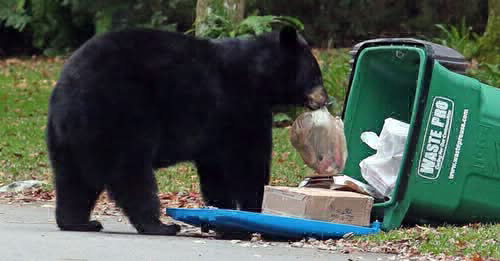
|
The Florida Fish and Wildlife Conservation Commission (FWC) recently made the decision to reinstate bear hunting, and the anti-hunting backlash was swift. However, the core of this decision is not about sport or politics; it is rooted in science, safety, and the well-being of both bears and humans.
Florida’s black bear population is a testament to successful conservation efforts. From a precarious low in the 1970s, the population has now climbed to over 4,000, thanks to decades of careful, science-based management. That recovery is worth celebrating. But conservation doesn’t stop at recovery—it demands sustained management within the limits of available habitat.
That’s where we are now. Bears aren’t just thriving in wild areas—they’re pushing into suburbs, neighborhoods, parks, and schools. Human-bear conflict calls are up 42% in the past decade. Injuries happen every year. And this year, Florida saw its first fatal black bear attack. These aren’t isolated events. They’re a clear signal that Florida’s bear population is growing beyond what the landscape—and communities—can safely support.
FWC’s plan is about restoring long-term balance. The proposed hunt is tightly controlled and grounded in data. It allows for just 187 tags across four Bear Management Units—less than 5% of the estimated population in those areas. It’s a very careful, calibrated step toward managing growth and reducing conflict.
And yes, hunting is a valid and proven management tool. Every U.S. state with a bear population over 1,000 uses regulated hunting to maintain healthy numbers. Florida would simply be joining the national standard. A regulated hunt is not only flexible and scalable—it also generates revenue for further conservation. Through hunting license sales and the Pittman-Robertson Act, millions flow into wildlife restoration, habitat protection, and public education efforts every year.
Opponents argue that non-lethal tools like bear-proof trash cans, fencing, and hazing should be used instead. These are important and necessary strategies—but they address behavior, not population growth. They can help reduce conflict locally, but they don’t stop the upward trend in bear numbers. Hunting and non-lethal tools aren’t either/or. They’re both essential parts of a comprehensive wildlife management strategy.
What’s most concerning is that many who oppose the hunt don’t offer alternative data or viable long-term solutions. Emotion is not a substitute for evidence. Wildlife management decisions should be based on science and field expertise, not hashtags or headlines.
I applaud FWC for listening to their biologists and taking this important step. And with another vote coming in August to finalize the plan, I urge the Commission to again put science first.
Florida’s bears have made a remarkable comeback. Now it’s our responsibility to ensure they remain a healthy, sustainable part of our state’s landscape—for their sake, and ours.
Maria Davidson, SCIF's Large Carnivore Manager, brings over 30 years of experience in bear management. She played a critical role in the recovery and management of black bears in Louisiana, contributing significantly to the species' delisting. Maria was also present for the state's first bear hunt in four decades. Known for tackling population and management challenges, Davidson has dedicated her career to addressing the recovery needs and management of large carnivores.